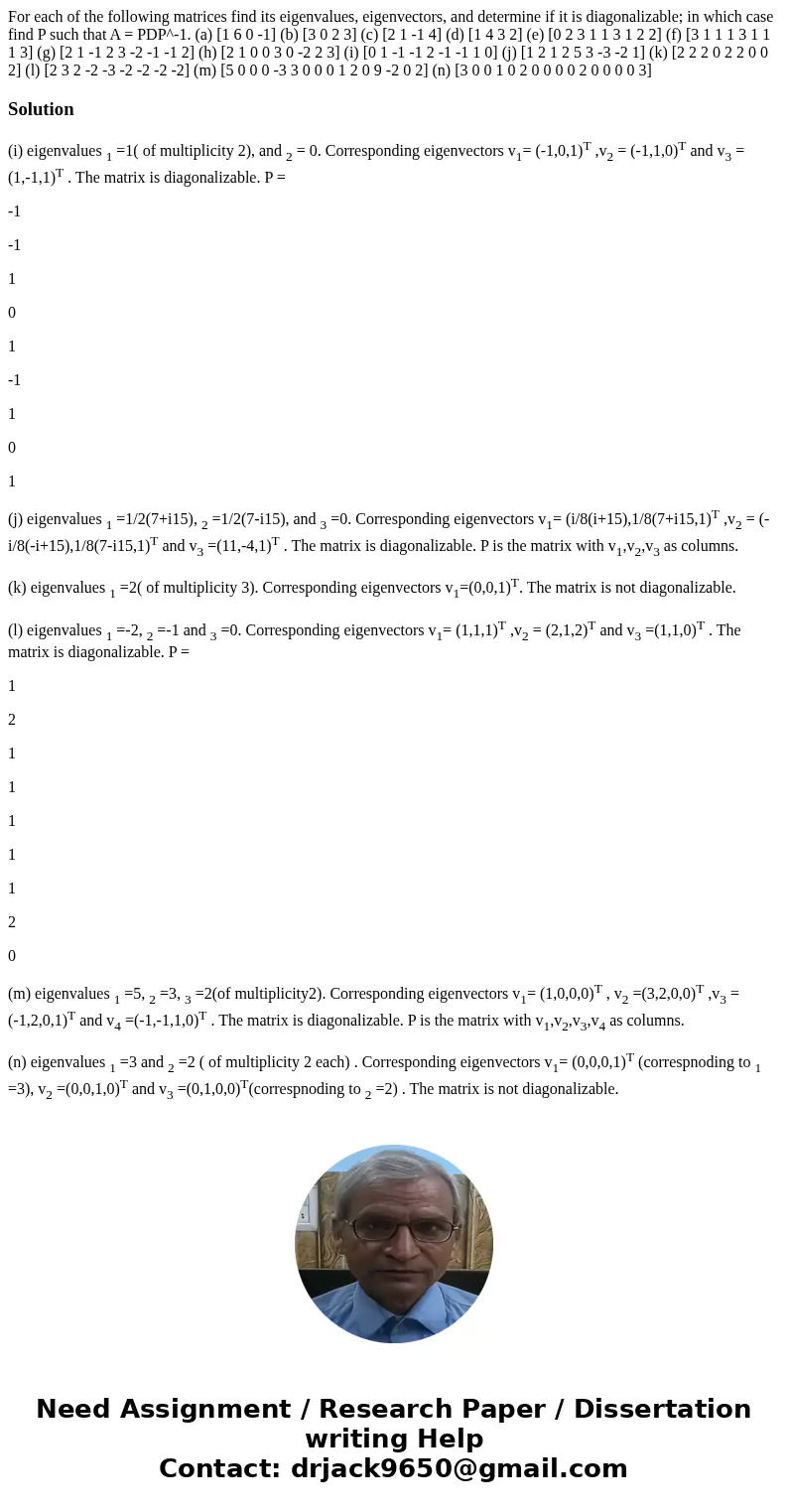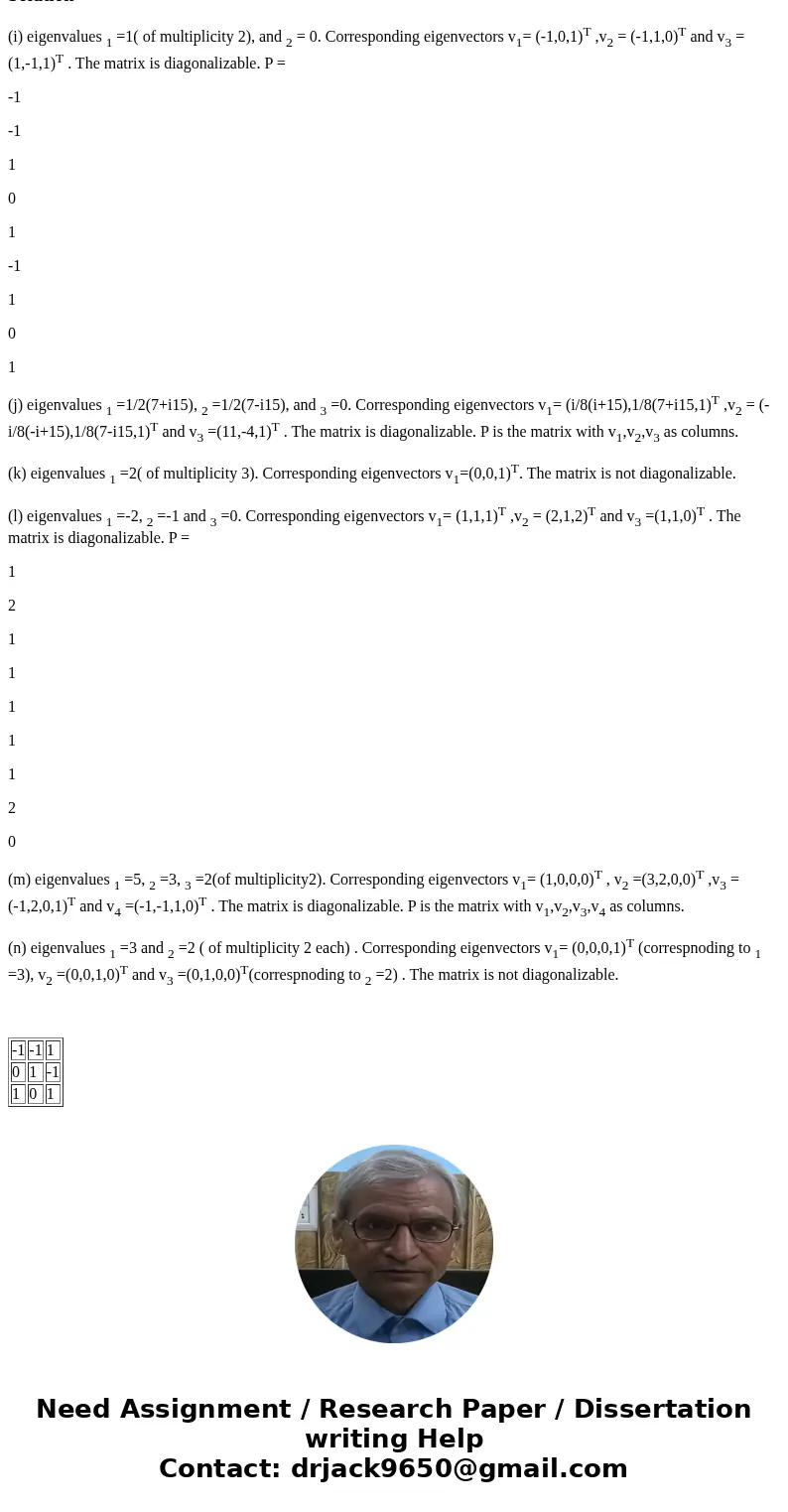For each of the following matrices find its eigenvalues eige
Solution
(i) eigenvalues 1 =1( of multiplicity 2), and 2 = 0. Corresponding eigenvectors v1= (-1,0,1)T ,v2 = (-1,1,0)T and v3 =(1,-1,1)T . The matrix is diagonalizable. P =
-1
-1
1
0
1
-1
1
0
1
(j) eigenvalues 1 =1/2(7+i15), 2 =1/2(7-i15), and 3 =0. Corresponding eigenvectors v1= (i/8(i+15),1/8(7+i15,1)T ,v2 = (-i/8(-i+15),1/8(7-i15,1)T and v3 =(11,-4,1)T . The matrix is diagonalizable. P is the matrix with v1,v2,v3 as columns.
(k) eigenvalues 1 =2( of multiplicity 3). Corresponding eigenvectors v1=(0,0,1)T. The matrix is not diagonalizable.
(l) eigenvalues 1 =-2, 2 =-1 and 3 =0. Corresponding eigenvectors v1= (1,1,1)T ,v2 = (2,1,2)T and v3 =(1,1,0)T . The matrix is diagonalizable. P =
1
2
1
1
1
1
1
2
0
(m) eigenvalues 1 =5, 2 =3, 3 =2(of multiplicity2). Corresponding eigenvectors v1= (1,0,0,0)T , v2 =(3,2,0,0)T ,v3 =(-1,2,0,1)T and v4 =(-1,-1,1,0)T . The matrix is diagonalizable. P is the matrix with v1,v2,v3,v4 as columns.
(n) eigenvalues 1 =3 and 2 =2 ( of multiplicity 2 each) . Corresponding eigenvectors v1= (0,0,0,1)T (correspnoding to 1 =3), v2 =(0,0,1,0)T and v3 =(0,1,0,0)T(correspnoding to 2 =2) . The matrix is not diagonalizable.
| -1 | -1 | 1 |
| 0 | 1 | -1 |
| 1 | 0 | 1 |


 Homework Sourse
Homework Sourse